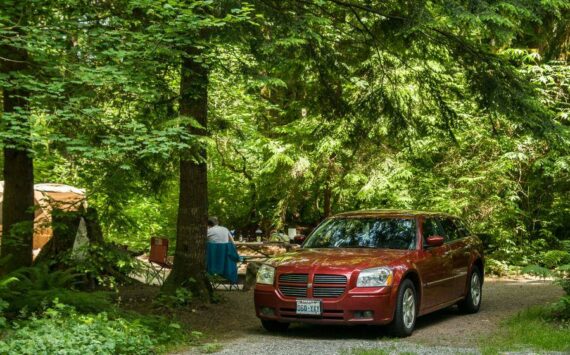By Morf Morford
Tacoma Daily Index
In hindsight, I am convinced that citizens and policy makers of the future will marvel at our befuddlement over housing.
It would be difficult to imagine a need more basic, constant and universal than housing.
Yet we, locally and to a large degree around the world, we seem to act, speak and make policy as if we had never encountered housing as an issue before.
Which is, of course, not even remotely reasonable.
Housing is central not only to individual and family security and identity (and, for most of us, our greatest and best investment) and housing, in the aggregate, expressed in neighborhoods, literally defines communities.
Some housing is semi-permanent, as in the case of home owners, other housing is more temporary, as in rentals.
And when it comes to policy and zoning, these are the two solid foundation premises for planning and construction.
But we are currently seeing, literally on our streets, the evidence that this set of policies and their criteria are all too obviously not working.
One of the obvious ironies is that we seem to never get zoning quite right, and housing rarely seems to be what or where or within the price range of those who actually need it.
As you look around our city – or almost any major city, you see construction projects – and they are housing.
And most of them sell almost immediately – many long before they are completed.
But it is not the homeless that invest in them and move in.
In fact the buyers are often investors that never move in.
By far the majority of buyers are out of state, or even out of country investors who have no intention of living here.
So what, exactly, is accomplished by these new and expensive building projects?
These projects might look good on our landscapes and on the bottom line of local contractors but they are no solution for our housing crisis.
The numbers of the all too visible homeless are not reduced.
In fact those tents and tarps seem to multiply by the day.
And if you do the math of housing construction, it is inevitable.
To put it simply, we need policies that increase, not decrease residential flexibility and will bring more supply (and, in turn, more affordability) to neighborhoods.
You may have noticed that virtually all construction materials are far more expensive than they had been just a year or two before.
And if you have been attempting to get a home project of any kind, from plumbing to sheetrock installation, you know that skilled workers are harder and harder to find.
The literal bottom line of housing construction is that costs are far higher, and most projects take far longer than expected.
Which does not contribute to progress along the “affordable housing” trajectory.
But what if, instead of expensive, complicated (and to be honest, all too often, ugly and look-alike) new construction that took years to build and tax dollars to subsidize, we used buildings that were already in place?
Neighbors would not object, historians might rejoice and majestic buildings might be “creatively re-used” in ways that architects, neighbors and even residents might be proud of.
Virtually every city has a wide swath (or two) of solid, beautiful and neglected buildings that have seen (and should see) better days.
“Infill” could suddenly stop being the scourge of community meetings and would be the unifying, instead of dividing, concept.
And when it comes to labor, vocational schools could offer apprenticeship programs in building restoration and rehabilitation.
Students, instead of, or along with, being paid, could “earn” rent in the building under construction.
Feeling Zoned?
Another housing related topic that planners, architects, builders and neighbors love to fight about is zoning.
What if, instead of proscribed and authorized uses of land, each city had a single area designated to be un-zoned?
Imagine an area, maybe ten or twenty (or more) acres, where there were no rules regarding construction (other rules, like public safety and sewage and pollution would still apply).
But size and scale, from tiny homes to hundred unit apartments could be built next to each other.
This would be, I would think, a capitalist, libertarian dream where the market – not code enforcers or building departments – would literally rule.
A building project from tiny home village to multi-story condominium would need to pencil out – without tax abatements or subsidies.
The return of the boarding house
Up until about a hundred years ago, boarding houses were extremely common in the United States.
During the 1800s an estimated one-third to one-half of urban residents either hosted boarders or were boarders themselves.
This style of housing accommodated a quadrupling of the American population over the 19th century, and enabled people to live affordably and temporarily within walking distance of daily needs and amenities – and in most cases, close to friends, family or those of the same ethnicity or religion.
But throughout the second half of the 20th century, these housing types gradually disappeared as a result of zoning that prioritized single-family housing (to rent or own), and explicitly made these transitional housing solutions illegal.
The U.S. has 54 million spare bedrooms. If each neighborhood, or perhaps each church, took in one homeless or soon-to-be evicted family, we would easily have enough living space to allow those families the recovery time to get back on their feet.
Being homeless accelerates and multiplies every difficulty. Just having a place to stay and keep things secure is a huge step toward recovery and re-engagement.
This boarding house idea is not as unlikely as it might first appear.
In fact our state passed just such a law in May of 2021 (https://crmpublicwebservice.des.wa.gov/bats/attachment/vetomessage/b1c423e1-cab4-eb11-81b9-005056ba1db5#page=1).
This bill will “increase housing unit inventory by removing arbitrary limits on housing options.” Translated into plain language, this means that groups of people who aren’t family will be allowed to live together.
Whether policy makers acknowledge it or not, this is already happening.
The size of the typical American family has been shrinking for decades, if not a century or so.
Until recently.
For the first time in over 150 years, the number of members of the typical US household has grown. (https://www.pewtrusts.org/en/trust/archive/winter-2020/the-number-of-people-in-the-average-us-household-is-going-up-for-the-first-time-in-over-160-years).
The reasons are obvious.
Maybe even so obvious that the city planners and code enforcers will take notice.
Our state population is growing, prices are rising and material shortages are becoming more extreme by the day.
It’s time to re-orient our policies to adapt to the realities in front of us.





